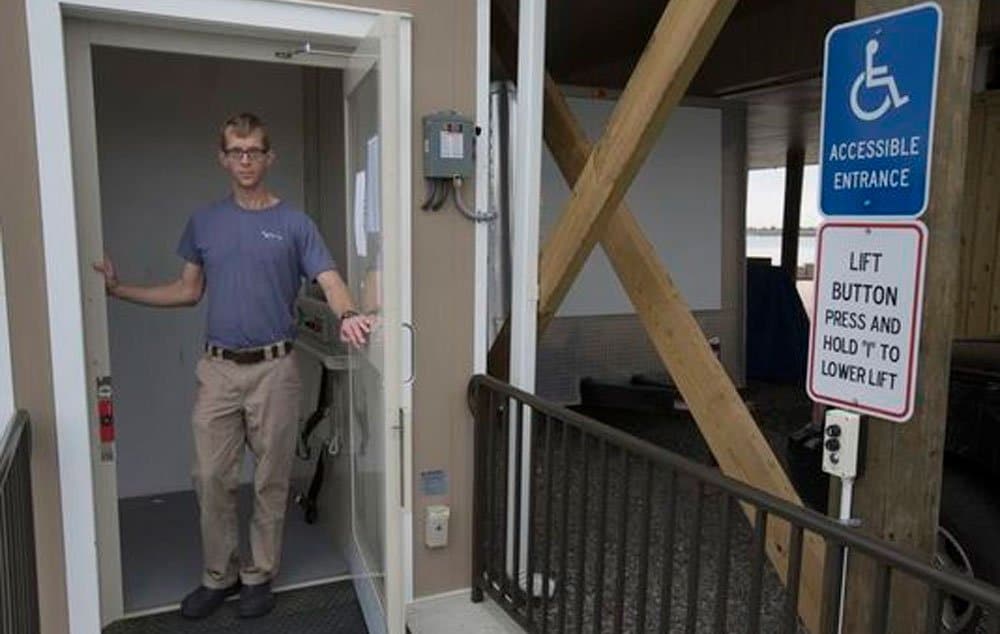There’s good news and bad news this summer if you’re planning to travel. First the good news:
On the East Coast, the Jersey Shore is more accessible: Hundreds of business owners whose buildings were demolished during Hurricane Sandy’s vicious attack are finding out that it’s good business to make their establishments accessible as they rebuild.
For owners rebuilding high enough to avoid future floods, the costs of access have been high. According to the Asbury Park Press, “To ensure Panini Bay Waterfront Restaurant was compliant with the Americans with Disabilities Act, [owner Ivar] Johnson could build a wheelchair lift and enclosure ($35,000); an elevator (up to $60,000); or a ramp (which would take an inordinate amount of time to climb). He chose the lift [because] ‘there are quite a few people who wouldn’t come here if we didn’t have it’.”
“The lift is used every day, not only by people with disabilities, but also by seniors who don’t mind the help,” Johnson told the New Jersey newspaper. His Panini Bay Waterfront Restaurant is on Tuckerton Cove, off Little Egg Harbor. We should give him our business if we’re on the Shore this summer.
Other restaurants, hotels, theaters, shops and public facilities were required to “spend money on ADA compliance if they applied for a building permit, which should lead to more places for wheelchair users to spend their money along the Jersey Shore.
And, now the bad news.
On the West Coast, Long Beach isn’t accessible enough. In fact, disability rights groups filed suit against the city of Long Beach, Calif., alleging discrimination against those with mobility impairments.
According to the plaintiffs, numerous Long Beach sidewalks and crosswalks have unsafe and hazardous slopes, uplifted and/or deteriorated sections, or are blocked by poles, trees and other obstructions making them too narrow for wheelchairs.
As a result, the lawsuit contends, people with mobility disabilities are restricted in their travel to work, restaurants, medical appointments and visits with family and friends. The class-action lawsuit seeks to compel the city to ensure that those with mobility disabilities can safely travel on the city’s sidewalks.
“I often feel unsafe, and it upsets me that people like myself who need chairs or other devices to get around don’t have the same freedom to go where they need to when they need to,” plaintiff Hector Ochoa, who uses a motorized wheelchair, told the Long Beach Patch.
In the skies above, fewer seating options. Southwest Airlines took a big step backwards when it comes to access. The airline’s new 737 planes have immovable armrests in the front rows. Therefore, those passengers in wheelchairs who bought tickets on Southwest because we could get ourselves onto the aircraft and transfer into that front seat — without the use of the dreaded aisle chair — have to now transfer into a more narrow seat with immovable armrests, or use an aisle chair to get to the second row of seats, which have armrests that raise.
Most passengers could give a hoot whether the arms go up or not, but it’s darn important for those of us who have to make the dicey transfer.
Why did Southwest make the change in the bulkhead rows? The fixed armrests have tray tables stored in them, and apparently passengers’ desires for tray tables are much more important than the needs of passengers like us.
Not good, Southwest. Not good at all.
Source: New Mobility



